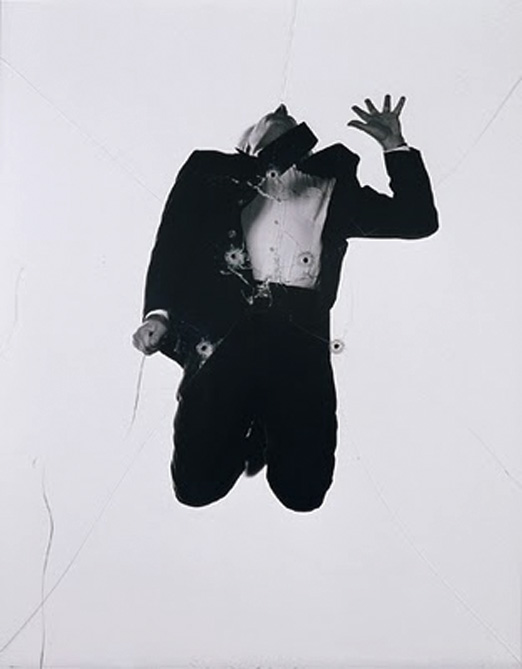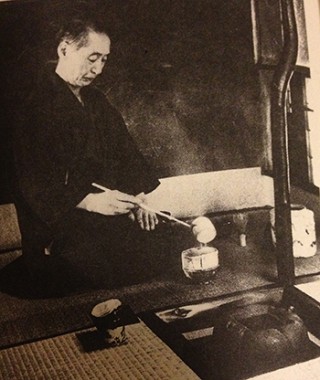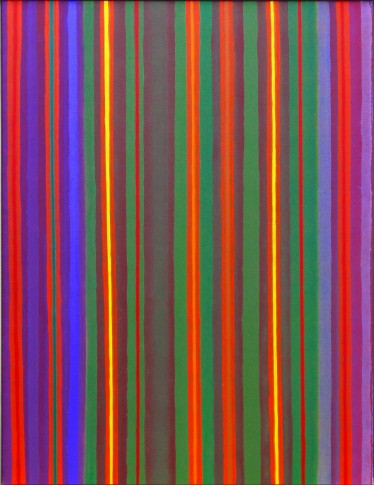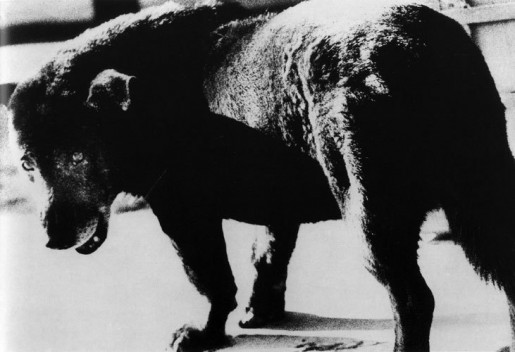
Oscar Bony
“No one shows such a knowledge of God as he who says one can know nothing.”
Thomas Aquinas
“I define “scientism” as the ideology of science, the way that science tells stories about itself, especially stories that are supportive of the social status quo.”
Curtis White
I over heard a discussion not too long ago on the subject of aesthetics. It was of course related to film. And then I read another brief discussion the other day that took place on social media. What came out of both these discussions was what I think is a threshold phenomenon in how artworks, visual arts anyway, are percieved. It is almost as if certain images, certain tropes in narration, provide a sense of freshness, even if they are resoundingly cliched. They are sort of training wheels artworks. Some of this is connected to inexperience in a sense, which is actually a pretty interesting issue.
I remember first year students who came into my class at the film school in Lodz, and often they had favorite films, and there were certain films that cropped up again and again on these lists; Donnie Darko was one, David Lynch often, and if one loved this stuff, then the natural progression was to embrace The Godfather, or Taxi Driver as an elevated version of this. Elevated kitsch. Now, in fact I think Taxi Driver is not really a bad film, but it’s quintessentially middle brow in a sense. It’s an exercise. It’s not a vision, it is facile visually, and inventive, and none of that is in and of itself a deficiency. But by itself, these are films that reinforce the status quo, and that finally, cohere into nothing much at all. They look ‘good’. But they look good in a particular sort of way. They are like cheap perfume, and they never quite exhibit the courage of their convictions. They are all appearance. Nobody is ever disturbed, or offended, or not very much, by such work. Coppola came closer to something enduring with Apocolypse Now, but even there, the fingerprints of the congruent sensibility are all too evident. Whenver cultural product enters into the lexicon of pop culture, one should be suspicious. These films are like fast food, like self identified cuisine cooked in a plastic bag. Just boil and serve. Yes, its better than Burger King, but it’s still crap. Watching Apocolypse Now, today, is uncomfortable because the pre-fabricated quality is more visible. The patina of art has worn off, and one is left with what are really only placeholders for something more significant. Now, the question is, what does significance mean.
I am reminded of Curtis White’s essay The Middle Mind:
“I had to ask myself, were these things out there on every car radio and on every beach-reading lap all just independently hopelessly mediocre, or were they part of what might be called a Mind? The new American Mind. The numbing (if not dumbing) Middle Mind?
I concluded that in fact they did have something in common, a shared cultural DNA of some kind. So I began to think about how this Mind could be described politically. Would this Mind like Bill Clinton? Was it liberal or conservative? In fact, I think the Middle Mind is generally liberal and did like Clinton more than it might have cared to confess in certain dark moments of that regime. In this country, conservatives have no particular need for the Middle Mind since they have been quite content to have demagogues like Rush Limbaugh, Chris Mathews, and Bill O’Reilly do their nasty thinking for the for them for many years. More importantly, I asked what the Middle Mind wanted? What was its reason for being? My conclusion was: it didn’t want us to think. If conservatives have no desire to think, while liberals imagine that they do, the Middle Mind is there to provide a culture of thought that ensures that it all amounts to the same thing: no thought from any quarter that is a threat to business as usual.”
My late friend Ork once said, Kurosawa was the kind of director did well at film festivals. It’s true. Bergman was the same. In a sense, this accord with institutional sensibilities, with bourgeois ideas of beauty, is often all too evident in both of these directors. But I think they appeal to a younger audience. Bergman is sort of perfect for University audiences. Kurosawa, really, has never surprised me. Dersu Uzala has merit, and I think Ran, does, too. But Im not sure they (as they said of Verdi) are as good as they look (sound).

Gabriele Basilico
Now, if one looks at Apocolypse Now today, the issue is about the entrance or entry-way to the narrative. It almost brings us back yet again to discussions of mimesis. And it’s a very difficult discussion to have. For onone level, Apocolypse Now is remarkable, and I don’t want to diminish the achievments of this film. But it remains a film that isnt really interrogating the ideas its presents. It is extremely facile and technically realized, and yet, the whole is far less than the sum of the parts. And this has to do with the ease with which the viewer engages with the story. There are only various levels of familiarity, and if one hires enough very good film actors (and Brando is actually a movie within a movie) then the essential banality of the vision is obscured.
My point, however, has to with a certain class of film (its true in fiction, too, but film sort of eclipses all else these days) that flatters the pseudo erudition, or just pop-culture savy, of its viewers, and part of this is, of course, to mention other pop cultural product. The other way, the more complex and subtle manner of creating iconic material (middle brow) is to reinfoce the hierachies in place, while chiding them with mild criticism. It is, as Chomsky said, and White quoted, you can say whatever you want, except for saying the ruling class hasnt the right to rule. But, let me approach this from another direction. One of the more fascinating books on aesthetics in the 20th century is Kuki Shuzo’s The Structure of Iki, Reflections on Japanese Taste, published originally in Japan in 1930. It is one of those sui generis oddities, a bit like Rene Daumal’s Rasa, that take on increased significance with the passage of time.

Hisamatsu Shin’ichi

Retablo, Alter, Church of Santa Domingo Puebla Mexico
To take this back to “what is significance”, and to these middle brow aesthetics I find so frequently today, I would argue that it is very directly linked to a cult of bad science, which is not much more than instrumental thinking, and of power. And more, of control. The esoteric and mystical problems and concerns of medieval monks and nuns looms today, it seems to me, as forgotten ways of thinking. I am ever more acutely aware of how strident and almost apoplectic is the fear of remembering in today’s 21st century West.
The strange philosophic concerns of Shuzo, are really a complex exploration of manners. It is a Japanese version, in one sense, of Lord Shaftsbury’s rules of etiquette. Shuzo’s examination of the spiritual aspects of style, however, are deceptively intricate and weighty. And they are linked to the erotic (stripes are to be worn by courtesans, flowers by ordinary middle class women, because parallel lines embody the most exquisite extensional qualities of the sublime). So, significance in a sense is linked to both the quality of sensual memory, and to the courage of telling the ruling class they have no right to rule.

Jade cong, from tombs, Neolithic Liangzhu, China
The issue of instrumental thought, however, continues to crop up, for me anyway. Lately, the quality of false individuality is being pimped from both right wing sources, but also increasingly from liberal media and public intellectuals, as well as artists. The science of the brain, for example. Ive mentioned the before a title I saw in a bookshop; ‘The Brain Explained’. I mean how can you write that title and think you are to be taken seriously. But part of what drives this new scientism is the desire to erase the collective aspect of making art. Not collaboration even, but the fact that artists always borrow and always create using images and language and story that is anchored in complex historical contexts, and even in community contexts. One doesnt “explain” the brain. I mean, what do you have when you’ve explained it? Anyway, but back to the politics of scienticism. If only YOU could harness the drugs and electrical charges in your explained brain, you could write a masterpiece. But this is the junk science of FOX news and MSNBC. It is the junk science, identified as such even, that is currency in the new pop comic book cultural landscape today.

William Perehudoff
Now this false individuality is clear also in the default setting for shaming, both economic shaming and sexual (slut) shaming. The individual fails one way or another, by standards of the ruling class and must feel shame. Pop psychology is rife with various notions of shame and shaming. The electronic kangaroo court jury is always out there. Failure is not acceptable, its always ALWAYS “your” fault. And this hyper inflation surrounding ideas of individuality accounts in part for the indifference in the public toward those in need, or suffering. It is the Puritan once again, rearing his ugly head.

Roberto Aizenberg

Daido Moriyama, ‘Stray Dog’, 1971
Still, they are not ideologically “individualistic”. They think of what’s best for the group, for the community, even if they lack the social skills usually associated with community. The new individualism, the branded individualism of the 21st century West, is one predicated upon this idea of shaming, but also of Capitalism. Websdale’s book on family killers touches upon that other surprisingly widespread phenomenon of men who leave their house and family each day, pretending to go to work. (There is the famous French version of this, made into a very good film by Laurent Cantet, Time Out, 2001).
This is the world that is also linked to the notion of ‘scientism’. The nature of that linkage is not immediately apparent. But I want to digress just a bit here, and make use of Francois Jullien’s terrific book The Great Image Has No Form; On the Nonobject Through Painting. In discussing Chinese classical painting he writes; “Instead of being taken over by things, it paints their effacement…”. This is, in a sense, very relevant to theatre. For it’s another version of my ideas about the ‘off-stage’. I have said before that Aeschylus was one inhalation, Sophocles one inhalation and one exhalation, and Euripides was finally simply breathing. This was the landscape painting of the Song Dynasty. When mist and haze introduced absence as a subject. When mountain peaks barely appear through cloud coverings, when branches seem to be there, and yet are not. This is an aesthetic that does not privilege display. Things, objects, are no less concrete or material for their absence. They are simply not presented for consumption. This would seem to very closely allign with the eliptical in narrative, and with the ‘off-stage’ in theatre. It is there, but not for you.

Thermal Baths, Switzerland, Peter Zumthor architect, 1996
Western art has been partly, always, an antidote to the scientific rationality that assumed ‘presentation as display’, that assumed things and phenomenon were there to be observed. This led to great achievments, no question, and one has to look no further than modern medicine. But, and it’s a big ‘but’, the advance of capital has forced this logic into the pathological. And because capital needs a profit, the selling of science, ideologically, has taken a particularly toxic turn. Science is really the new magical thinking in the West today. In fact, the birth of tragedy was about an event that revealed that which could be experienced no other way. This was the point of having a stage (and an off-stage). The Dionysian was the introduction of absence (partly, it was more things as well). So today’s artworks tend to reflect an ideological belief in display, both in story, and in form. Things must be there, explained, and ready for consumption. The adding of decoration, of various ‘strange’ effects is really the introduction of quite conventional material, all of which reinforces the prevailing system of beliefs. The problem, or danger, here is that western 21st century artists, for theatre and film and painting in particular, is to fall into a subjectivism that dis-connects from the material world, and from history and memory. This is the realm of new age mysticism. There is an obfuscation of the subjective as much as there is of the objective. The new subjective is built of material from shopping, from the collecting of lifestyle purchases, of hyper-branding. And in reality, the scientism we speak of is actually comfortable with this new subjectivism, because it is actually the same world view. The same amnesia.

Adminstrative lab, NASA
I want to discuss all this in terms of theatre. And if I talk theatre, I have to talk architecture, too. In classical Chinese painting, as Jullian describes it, one of the principle ideas was of to ‘come out and go back in’. This is a bit related to what I wrote about before with the new Zumthor design for LACMA. The ramps that suggest entering a forest. This is breathing, again, as a design principle, and it is perfectly suited to discuss as an element in theatre. Dissapearance preceeds appearance. The end comes before the beginning.
“Men in the distance are without eyes”
Wang Wei
But to return to those discussions I overheard, and this idea of what becomes iconic and established in popular culture, the pertinent thing is perhaps this quality of presentation that favors ‘display’. For this kind of display is linked to consumption, and to a manufactured “now”. And to, by another path, the hidden shame that permeates western society (at least the U.S. anyway).
“People learn to act as if they were complete in themselves and independent of others. This feature has constructive and creative sides, but it has at least two other implications: alienation and the hiding of shame.”
Thomas Scheff
This is quite interesting if one looks at it aesthetically, or in terms of aesthetics. For Chinese painting there was an almost moral purpose, or spiritual purpose, to artworks, and had to do with latency. As Jullian puts it; “The term latent (you)expresses the withdrawl into absence, the sinking down into the stage of confusion and hiddeness, whereas the term subtle (wei) expresses invisiblity-intangibility at the stage before the actualization of forms and their differentiation.” In other words, the hidden confusion is what brings us together, not seperates us. And in art, the off-stage, the dark corner, the silence, the pause where only breathing is heard, is community, not alienation. Alienation of social relations today is plastered advertisements and labels and brand names, and it is all there to prevent the questioning of authority, of the status quo. And lurking about the edges of this topic is another and that is sincerity and cynicism. Mass popular culture today is so permeated with cyncicism that it goes unnoticed, actually. The invention of ‘popularity’ is pretty recent, as an idea, as a sales principle, and it has deep ideological resonance today. For there is something amnesic in these films, Coppola and Scorsese, and in almost anything that is able to carve out a place of acceptable importance. These films do not question who rules. They do not destablize the master narrative. This is not to say their haven’t their virtues, for they do (sometimes), but the invention of popularity means erasing that which is NOT popular.

Pompeo Batoni (1708-1787), St John the Evangelist.
And that erasure is increasingly built into the meaning of the artwork, to its constructive fabric. I WANT to be popular. When one reads Websdale’s book Policing the Poor, it is hard not to be struck by the psychic costs paid by the American underclass today. And it is hard not to sense, acutely, the rise of an arrogance in white upper classes today, an arrogance and a sadism. So, to try to bring this back around, and I intend to post a good deal more about connected to Jullian’s book, and to this idea of the missing in aesthetic discussion. For there is a new cunning, and sort of intentional cruelty to much that I see or read today, that which comes from the U.S. anyway, mainstream media and art, and is missing the humility that is there when the artist is receptive. There is a Chinese saying from Shitao; “if you know and then are receptive, that is no longer receptivity”.

Naoya Hatekeyama, lime factory

You’ve mentioned your experiences in Poland a few times and I wonder why you never bring up Kieślowski. I was actually thinking recently about revisiting his films and see if I still “like” them. I saw all the Dekalog and Trzy kolory when I was a college student in Montreal in the mid nineties. There was an excellent & fun underground movie theatre right by where I lived and sometimes I’d skip the inane classes and watch films all afternoon. That’s how I got addicted to Kieślowski films but I almost don’t want to see then again because I question whether I’ll think they are as good as I once thought — and the associations I have with the city of Montreal — which still maintains its fascination for me.
Im pretty high on Kieslowski in the end. I dont think I ever fell in love with him for some reason, but its remarkable work. I should mention him more.
your post reminds of the chinese (taoist) principle of wu wei. non doing. action without action. the space between the breaths. I recently got this as a tattoo. Work that stands out to me uses absence in it’s purest form. I think mizoguchi got this right in some of his films.
cool jack, Im for MORE tattoos. Im adding this as a footnote……because really, its related and its a topic I posted about before http://blackagendareport.com/content/coming-home-roost-american-militarism-war-culture-and-police-brutality